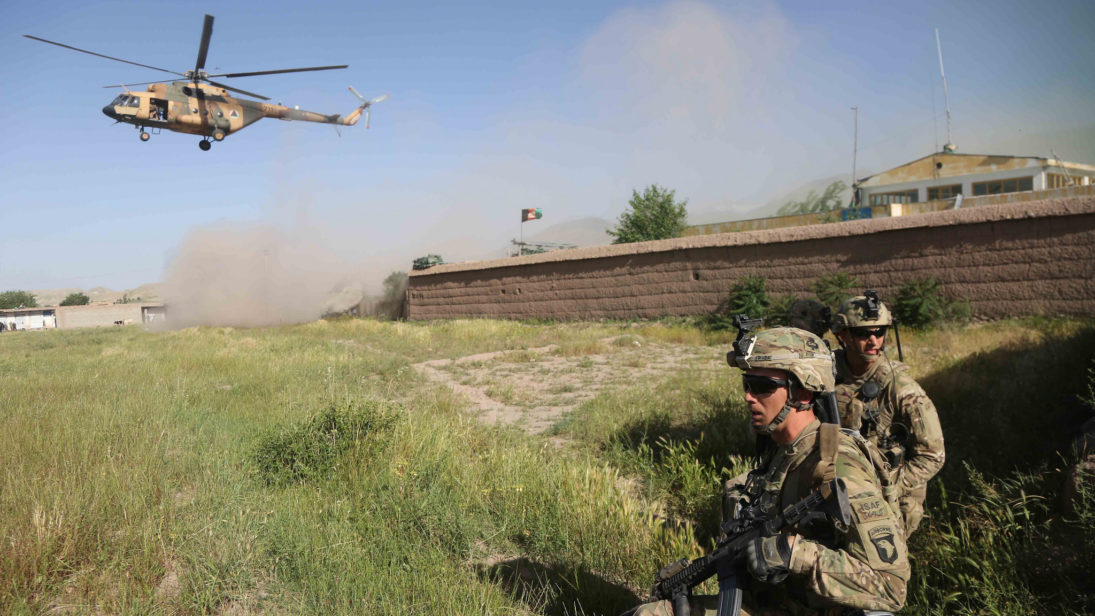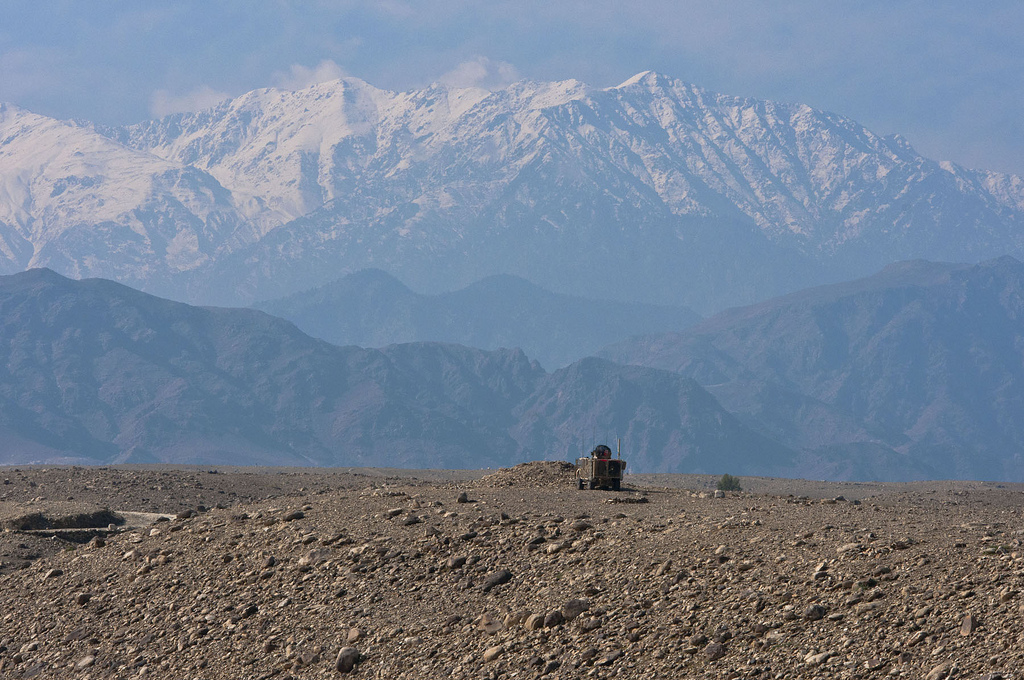
Over the last four years, the Islamic State (IS), though a late entry in the already crowded jihadi battlefield of the country, has managed to spread its terror across Afghanistan. Reports of IS presence in Afghanistan began doing the rounds in 2014, when disenchanted members of the Taliban sought allegiance with the larger Islamic State due to internal divisions over territorial control and taxation. In January 2015, IS announced its extension to Khorasan, a region including parts of Afghanistan, Pakistan, and Central Asia. Most recently, Islamic State-Khorasan Province (ISKP) claimed responsibility for a lethal suicide attack in Kabul that saw the death of 31 people, including journalists. This article aims to explain why ISKP has proven resilient in maintaining and expanding its presence in Afghanistan, despite facing persistent attacks on its territory and leadership structure by multiple stakeholders.
ISKP’s Rise in Nangarhar
Following the January 2015 announcement, ISKP quickly established a secure foothold in the Nangarhar province of eastern Afghanistan. Nangarhar, which shares a 100-kilometer border with Pakistan, has historically been a battleground for power struggle between the Taliban, militias, local strongmen, warlords, and the local government. Often, these actors will align with each other or, on occasion, the United States. According to the Afghanistan Analysts Network (AAN), the emergence of ISKP in Nangarhar can be attributed to one such coordination when the United States intervened in a dispute between two warring sub-tribes in the southern Achin district. Reportedly, in 2009, the Sepai sub-tribe received arms and funds from the United States in exchange for maintaining a militia to oppose Taliban activities in their area. However, this experiment failed after the Sepai sub-tribe engaged in a conflict over land with rival sub-tribe, Alisherkhel, with whom the Sepai have a history of conflict. This sparked the Sepai’s adversary to call upon Pakistani militant groups for help, a move that created a power vacuum and weakened the Sepai such that ISKP captured the area in 2015.
Another major variable was the gradual withdrawal of U.S. forces in Afghanistan after 2014, after which the government’s control over the districts in the southern and eastern regions of the country weakened. Interestingly, despite reduced government control in certain districts, the Afghan Taliban were unable to bring the province under a single command. The death of Mullah Omar and appointment of Hibatullah Akhundzada saw a breakdown in the Taliban’s organizational structure, during which time many disgruntled fighters began acting independently. This was intensified by taxation rules requiring field commanders within the Afghan Taliban to report the tax collected from the locals to the finance committee of the movement. As a result, factions of the Taliban, for example dissident Taliban commander and self-proclaimed ISKP leader Qari Hekmat’s faction, declared allegiance to the ISKP. This demonstrates that some degree of disillusionment within the Afghan Taliban benefited ISKP’s recruitment efforts. With the Taliban’s unity damaged and a minimal presence for the Afghan National Security Forces (ANSF), ISKP found Nangarhar ripe for the taking.
Meanwhile, the Tehreek-e-Taliban (TPP)-affiliated militant groups, functioning under the loose umbrella of the Taliban movement and clandestine Salafi networks, found an alternative in ISKP. (The Salafis have always had a troubled relationship with the Taliban due to the latter’s inclination towards the Hanafi school of jurisprudence.) ISKP is comprised of former members of the Afghan Taliban, radical Salafis, and militants of Lashkar-e-Islam. In 2013, the death of TTP leader Hakimullah Mehsud, who was gradually losing control over the militant group, further contributed to the evolution of ISKP. The growing divisiveness within the group led many within Afghan and foreign groups who were loosely aligned with TTP to defect to ISKP.

Resistance and Resurgence
Since ISKP began establishing what Defense Secretary Ashton Carter called “little nests” in eastern Afghanistan in 2014 and 2015, the United States, the Taliban, and the ANSF have all dealt damage to ISKP in hopes of curbing the group’s ability to expand or recapture lost territory. The United States’ targeted killing of Abu Saeed, emir of ISKP, in July 2017 was considered a massive blow to the militant franchise of the Islamic State. According to AAN, the U.S. military campaign going on for the last two years has killed 20 of ISKP’s leaders through air strikes. Additionally, ISKP has been facing an onslaught from the Taliban forces, whom they regard as “filthy nationalists.”
Despite losing a few of their important leaders, ISKP has proven resilient in Nangarhar and beyond. For instance, in July 2015, the Taliban waged a counterattack against in the Mamand valley of the province, which led to ISKP losing most of its territory to the Taliban. However, ISKP’s resistance later forced the Taliban to retreat, and southern Nangarhar province has remained the group’s command base, strategically located near Pakistan’s Khyber Agency through which ISKP reportedly receives supplies of arms and ammunition. The ANSF too has struggled to drive ISKP out of Nangarhar. In mid-2017, after briefly controlling parts of Deh Bala district, the ANSF withdrew following strong resistance from ISKP. Importantly, the ability of ISKP to cause the ANSF forces and the Taliban fighters to retreat from the areas has shored up their credibility among fighters and youth interested in joining them.
ISKP has demonstrated its objective of expanding to and launching attacks in areas beyond its Nangarhar bastion. In the Jawzjan province in north-western Afghanistan, Qari Hekmat succeeded in establishing an enclave for ISKP that included shadow government structures in the districts of Darzab and Qush Tepa. (However, his death in an Afghan air strike in April 2018 could prove a decisive blow to ISKP’s presence in districts beyond Nangarhar.) In areas where their presence is low, they have engaged in large-scale attacks against civilians. Last month, ISKP claimed responsibility for a suicide attack at a Kabul voting center that killed at least 60 people, injuring 100 others. News of the attack was followed by another report suggesting IS militants had beheaded three brothers, all medical workers, in Nangarhar. Such attacks indicate ISKP’s objective of sustaining itself as a potent militant force, even though it may not boast of territorial holdings like those of the Afghan Taliban.
A Lethal Force
ISKP, due to its disregard for civilian life and ability to “expand like a balloon,” has proven to be a lethal force for Afghanistan and the United States alike. Nangarhar was the deadliest Afghan province for U.S. troops last year—roughly one-third of the 21 American soldiers who died in combat in 2017 were killed in the province. This occurred despite a renewed focus on the part of the Afghan government on countering ISKP in Nangarhar that began in July 2016. To counter ISKP, the forces of the United States, NATO, and the Afghan National Army must not only be relentless in their campaign against the group, but should also monitor its ability to spread beyond Nangarhar and launch attacks against civilians in Kabul and throughout Afghanistan. Ignoring or minimizing ISKP’s resilience and resurgence will only intensify its lethality.
***
Image 1: Regional Command East via Flickr
Image 2: seair21 via Flickr


